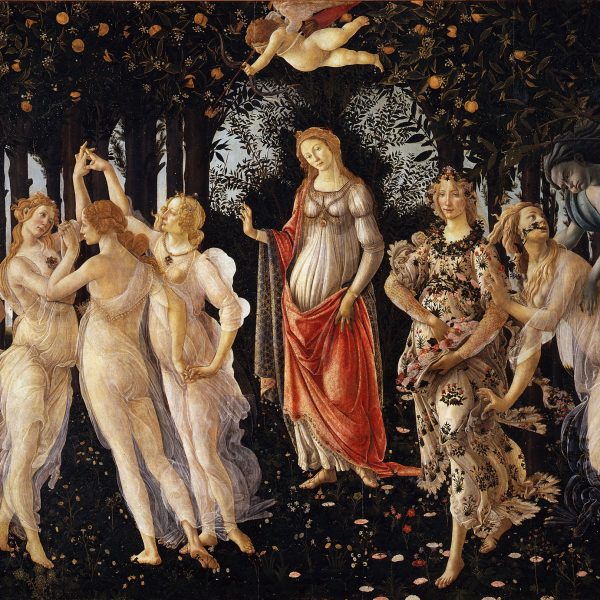THE CREATION OF ADAM – MICHELANGELO
The fresco on the ceiling of the Sistine Chapel of Vatican contains 9 scenes from the Old Testament depicted with the enchanting design of Michelangelo. “The Creation of Adam” is located in the middle of the ceiling, at the focal point of the viewer. Despite this subject having been produced with so many different styles and interpretations in art history, Michelangelo’s version remains as the most iconic one.
The painting can be divided into two diagonal parts. The left part represents the Garden of Eden on earth. Michelangelo, avoiding an intricate landscape imagery, depicts the Garden of Eden with plain green layers representing earth and bluish tones representing the mountains. Newly created Adam is shown lying in the Garden of Eden, lifeless, his leaning body supported by one arm. He is waiting to receive life. While Michelangelo uses very simple lines to depict the landscape, he portrays Adam meticulously with extreme care. Adam’s aesthetic pose reflects all anatomical details with a realistic look.
The right part of the painting shows God and his angels floating in space towards Adam. God is shown in a simple pink tunic and a dark red mantle. With his grey hair and beard he looks old and wise; but at the same time he has a strong young muscular body and a chiseled face. It is stated in the Bible that God created man in his own image. Thus, the representation of God in a human image (in fact, the representation of Adam in the image of God) is not a coincidence.
Underneath the mantle of God lies several angels with children’s features who float with him. A quite questionable figure is the one just under the left arm of God. According to some interpretations, this figure with more feminine and gentle features, is “Eve” who was created but not yet sent to the Garden of Eden.
The most impressive point of the painting is where God’s index finger is about touch Adam’s. This point is located in the middle of the painting where the floating figures on the right connects to Adam’s figure on the left. That is the moment God is just about to touch Adam’s finger. Adam’s lifelessly bent wrist and hanging fingers contrast with the tense and strong fingers of God.
The design and technique of Michelangelo is so powerful that the viewer feels how God is rapidly approaching Adam and how Adam’s lifeless body will be enlivened with God’s energy and he probably will stand up all of a sudden. The viewer is strongly connected to the painting feeling the excitement of the ultimate moment before this energy transfer happens.
The Creation of Adam has become one of the most iconic images of our time; has been imitated, reproduced and inspired many other works. Michelangelo’s extraordinary success comes from his supreme talent in depicting human anatomy as well as the thrilling feeling he creates on the viewer.
Location: The Sistine Chapel “La Cappella Sistina” – Musei Vaticani, Vatican
Date: ca.1511
Period: Renaissance
Sub-Group: High Renaissance




